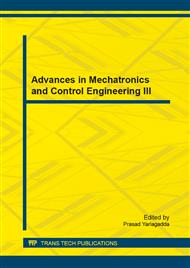p.197
p.203
p.207
p.212
p.220
p.228
p.233
p.238
p.242
Effect of Uniaxial Stress on Magnetic Permeability and Magnetic Loss of Low-Carbon Steel in Weak Alternating Magnetic Field
Abstract:
The inverse magnetostrictive effect provides a chance to detect the stress by measuring some magnetic parameters. So it is important to learn the effect of stress on some magnetic parameters. A measuring system to measure magnetic permeability and magnetic loss and a device to load uniaxial tension and pressure stress were developed. The result shows that magnetic permeability and magnetic loss increase with uniaxial tension stress increase and decreases with uniaxial pressure stress increase. It is also concluded that the relative change of magnetic permeability and magnetic loss decrease with increase of the included angle between the directions of the stress and magnetic field. These results suggest that magnetic permeability and magnetic loss can be further used to evaluate the stress in low-carbon steel.
Info:
Periodical:
Pages:
220-227
Citation:
Online since:
October 2014
Authors:
Keywords:
Price:
Сopyright:
© 2014 Trans Tech Publications Ltd. All Rights Reserved
Share:
Citation:


